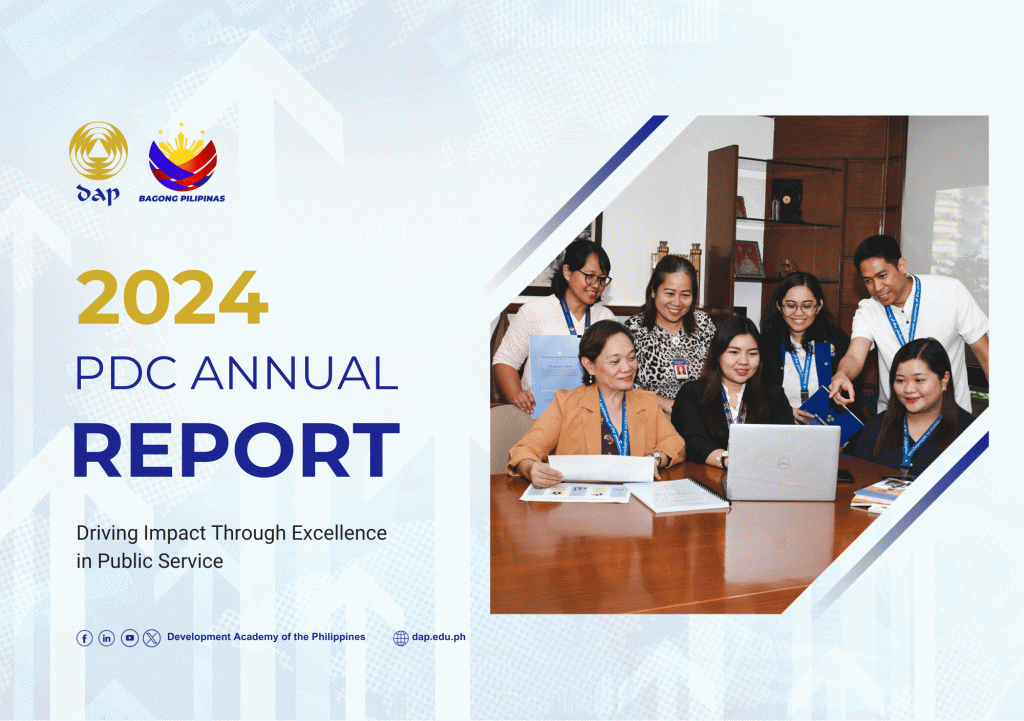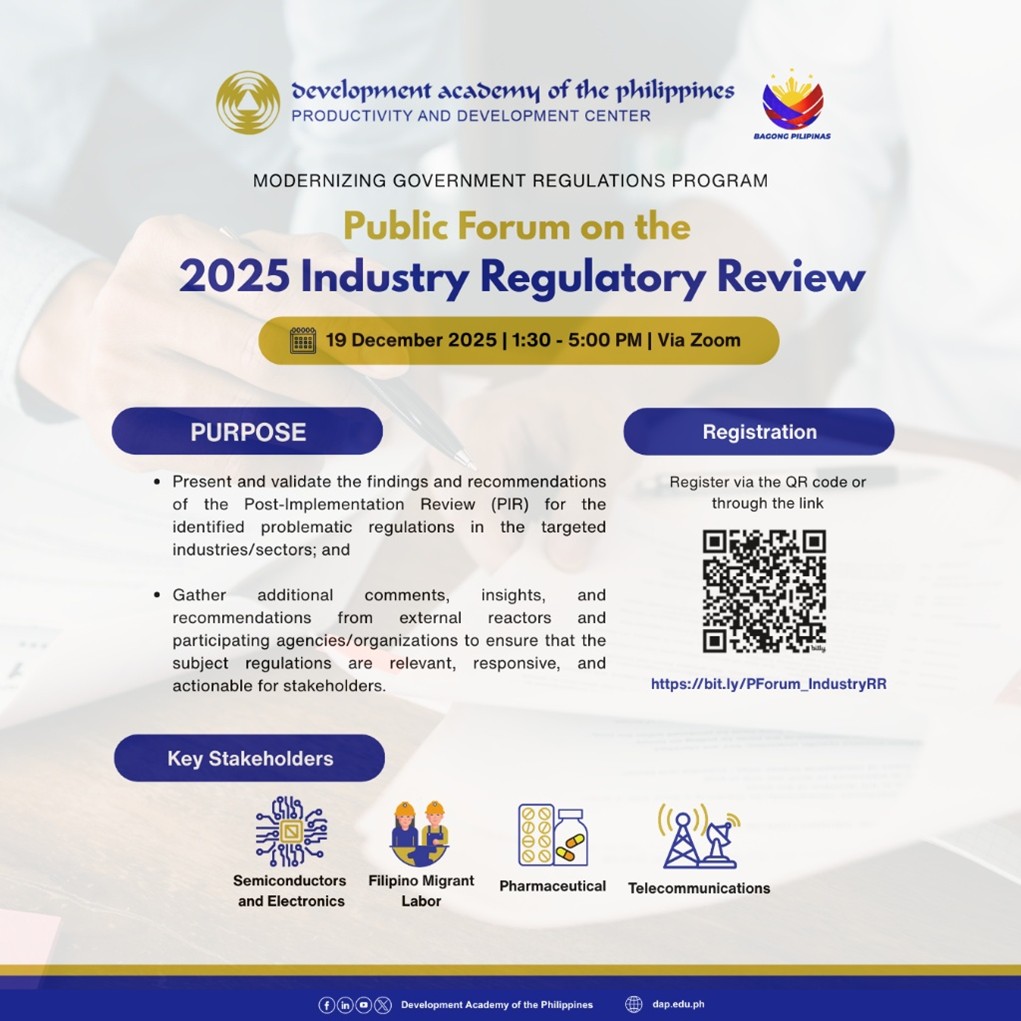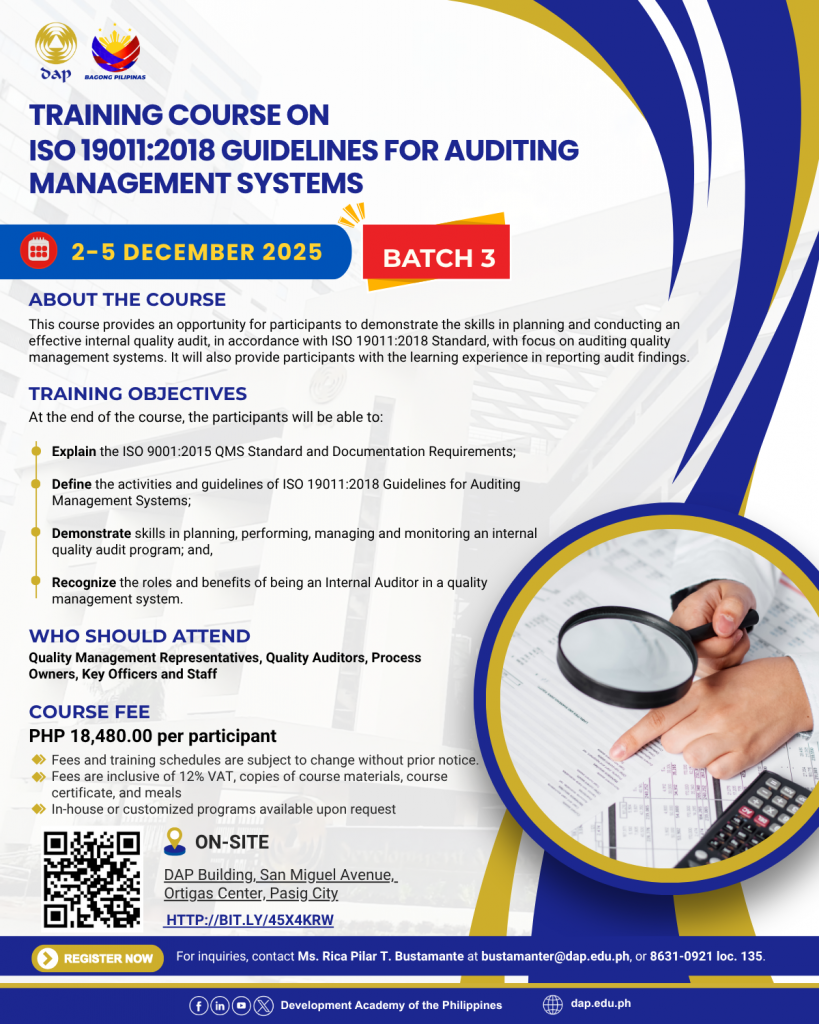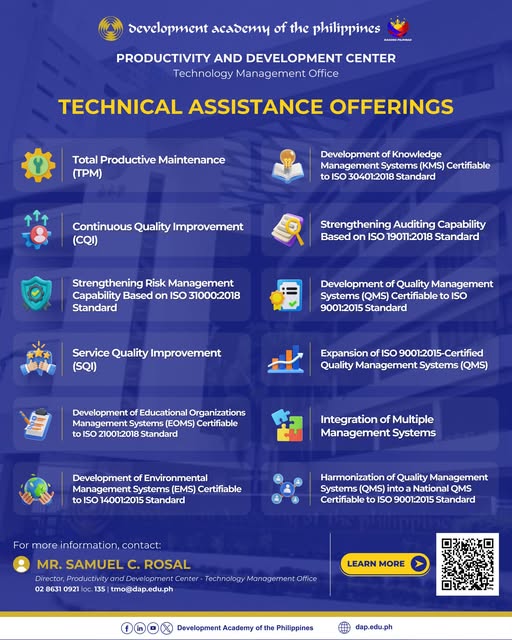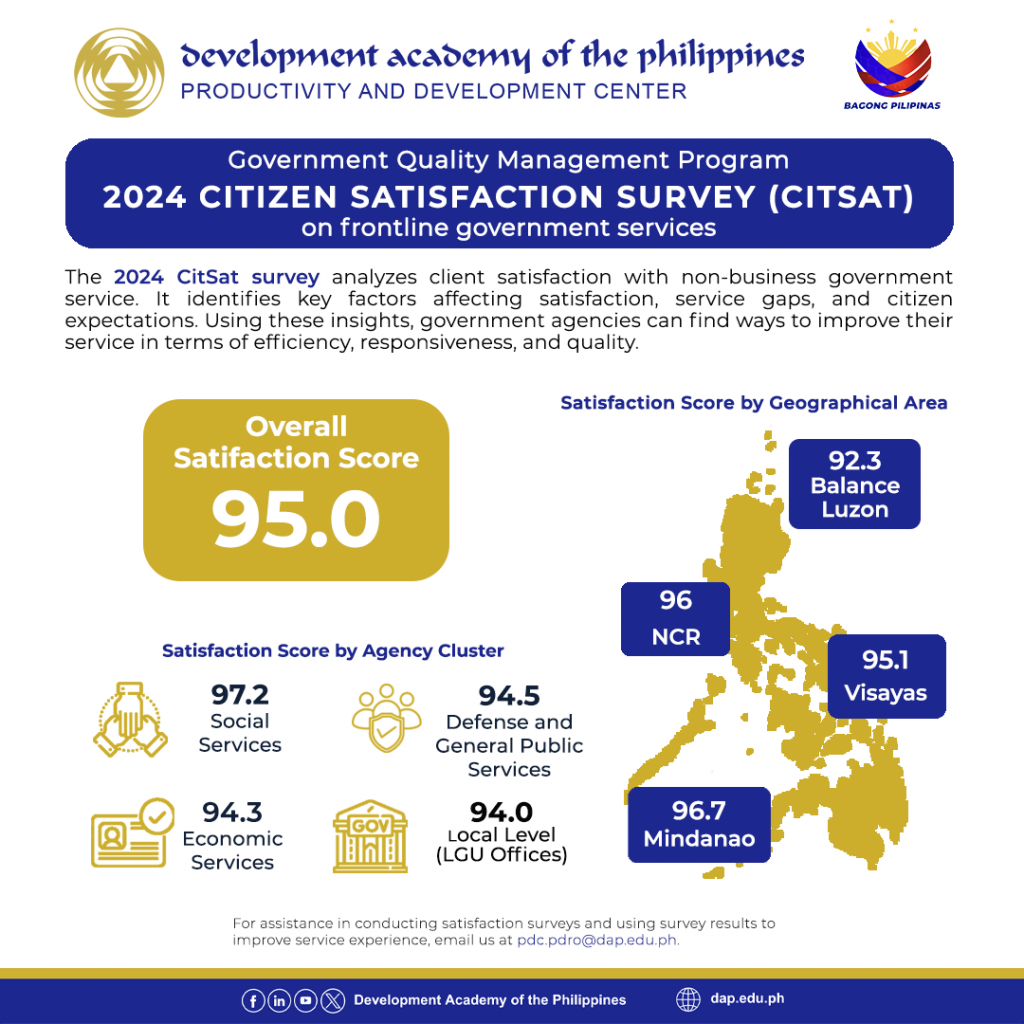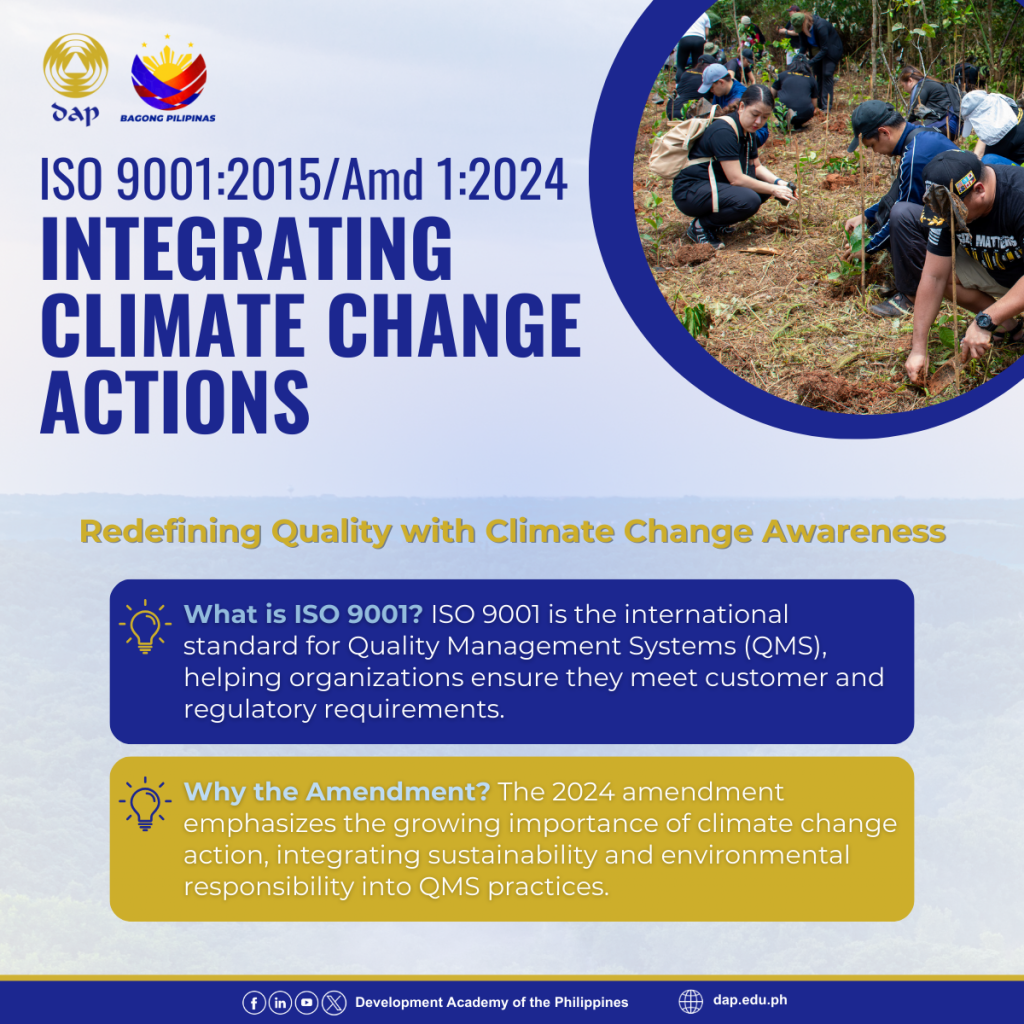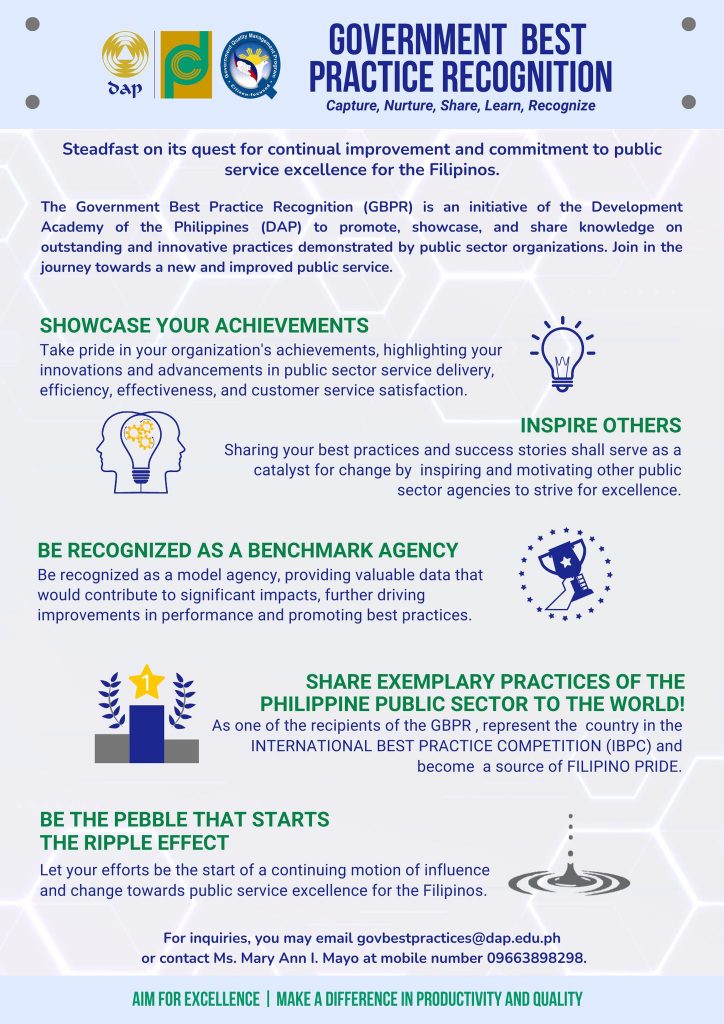A value chain is a set of activities that an organization carries out to create value for its customers. Activities throughout the value chain are examined to see how they are connected and to find out what improvements can be done. It focuses on systems, and how inputs are changed into outputs purchased or consumed by the customers.
As the activities throughout the value chain are examined, organizations will be able to:
- See how processes and subsystems are connected as well gaps in between
- See what improvements can be done to create or increase value for the product and/or service
- Understand the sources of and create value of product or service for the customer/consumer
- Determine the costs of the way value chain activities are performed as it affects the value of the organization’s products/service.
Using this viewpoint, value chain analysis is applied in DAP’s research study on selected agricultural commodities (2013). To analyze the efficiency of the supply/value chain structure and the robustness of commodities, the study team tracked the flow of goods, information, and cash at the core processes (production and harvesting, postharvest, semi-processing, and marketing). It also examined important aspects of key management and support systems and processes that affect the development and performance of commodities – policy and planning, delivery structure and extension service, monitoring and evaluation, research, market infrastructure, and quality management and assurance. See figure:


